HAIR TRANSPLANT
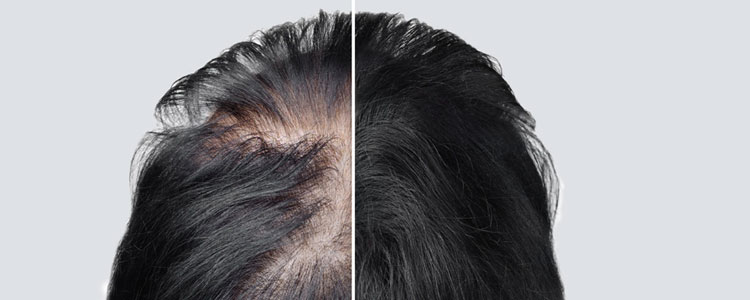
The Micro-hair transplant as a remedy for baldness
During a transplant of this kind, follicles (or graphs) long-lived, taken from areas not affected by baldness, are micro-grafted in the balding areas. Since the transplant of their follicles, the intervention is also known as self hair transplant.
Thanks to research and the discovery of new surgical techniques, micro-hair transplant has become a surgical procedure that is very sophisticated, there is a little challenge for the patient, and can be achieved with security and great success in outpatient facilities like a day hospital.
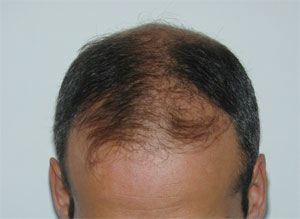
Before transplant
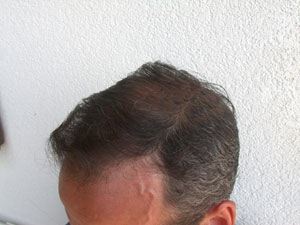
After transplant
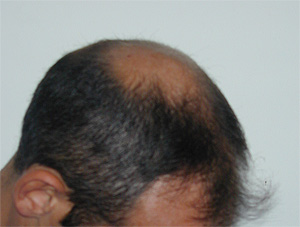
Before transplant
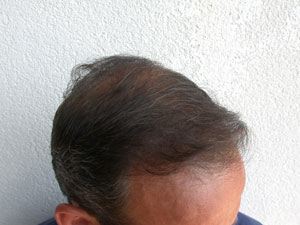
After transplant
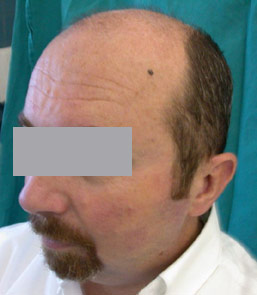
Before transplant
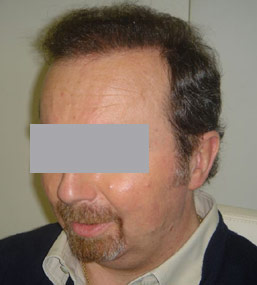
After transplant
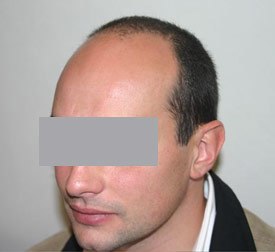
Before transplant
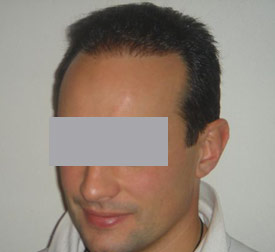
After transplant
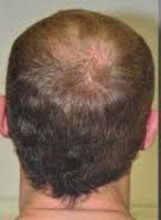
Before transplant
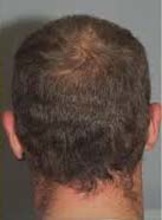
After transplant
GENERAL INFORMATION ABOUT BALDNESS
Hair cycle
The hair has a cycle of evolution and does not grow indefinitely.
During a normal cycle, the follicular unit (or root of the hair) passes three stages well differentiated and should be alternating throughout the life of the follicle: the anagen phase, in which the hair grows and has an approximate duration of three years. The catagen phase, which corresponds to the fall of hair, and the telogen phase during which the follicle root maintains a state of rest that lasts about three months and the hair does not grow. After this last phase begins a new cycle with the anagen phase.
In this way, we can lose from sixty to one hundred hairs per day and simultaneously start the growth of other sixty / hundred hair.
Overall, the life cycle of hair ranges from three to four years. We have distinguished two different types of follicles: those short-lived, planned to repeat the life cycle for about twenty-five years, and those long-lived, planned to repeat the life cycle for about seventy to ninety years.
What is hair loss?
Hair loss is a natural process and inheritance that can manifest both in men and women that results in a gradual and permanent hair loss. The fact that hair loss is inherited means that the genetic inheritance of a man has already been determined before birth knowing what hair will be lost prematurely.
It also means that hair loss is not avoidable and it cannot be stopped, or at least influence the course when it is already placed.
Hair loss usually begins around twenty to twenty-five years both in men and in women.
Factors such as stress, disease, or malnutrition can affect hair loss.
Why hair loss occurs in certain areas?
The baldness usually strikes in a more or less extended portion in the front and top of the head: follicles short-lived get worse progressively and then thinning to baldness.
Basically in all cases, side hair regions and rear grow for the whole life because here you can almost only find long-living follicles.
MICRO-HAIR TRANSPLANT
How can I transplant?
In local anesthesia is done the removal of a section of the scalp from the back-head area. In this region will remain a fine long linear scar ten fourteen cm, now covered by hair surrounding.
The strip of scalp is then cut, partly cut under the microscope in small parties, such micro-transplant containing one to three graphs.
These micro-transplants are grafted to a one in the areas affected by baldness, practicing the micro that leave virtually no scar. Everything is always under local anesthesia.
How do I get a natural result?
Every hair on the head grows at a certain angle and with a very clear direction. The surgeon particularly sets the angle of subcutaneous insertion of the graphs so that the transplanted hair grows in the right direction.
In addition, the front hair line is not a line itself but an uneven distribution before the hair line with performance and density widely varies. To exactly perform this execution, it is not only required a superior knowledge of this surgical technique, but also a strong artistic sense through the use of very advanced techniques.
Obtaining the highest density
In addition, to reproduce a hairline gradually and naturally, the most important goal of the patient undergoing this intervention is to recreate a density of hair to give a good thickening of the area bald.
During a session, you can transplant from 2500 to 3500 hair. If baldness is not yet too wide, enough to cover these balding areas or calve. Otherwise, you need additional sessions, delayed.
How many grafts transplanted will survive?
Normally, in the absence of complications, 95% of transplanted graphs survive. It must be stressed that no surgery can be guaranteed or considered certain, as it is determined not only by the quality and the initial conditions of tissues but also by the specific reactions of the organism in general and the affected areas in particular.
RESULTS
Usually, the hair transplanted together with graphs fall shortly after the surgery. To enjoy the re-growth you must wait about three to six months. From this moment onwards growth follows the normal pace of hair growth, which is 7 / 8mm per month.
Are there risks?
No surgery is never without risk. Closely observing the indication from the surgeon before and after the intervention reduces possible risks (infection, bruising) to a minimum.
Can any patient undergo this procedure?
Men and women of all races are potential candidates for this type of intervention. Only a low percentage of cases, for example in the presence of hormonal disorders or precise dermatological diseases, micro-transplant may not be suitable.
Nor age is a complexity, although clearly the youth and adults are in the best position.
What alternatives are there?
Mainly there are two main alternative processes:
- The procedures using artificial synthetic fibers are now abandoned in countries and more looked upon for the countless problems they create.
- The rotation of surgical flaps, which is always a natural method, but surgically are more demanding and reserved for the most serious cases (burns, etc..): unlike the micro-transplant, this procedure involves the transposition of large areas of scalp from their spot to the physiological region of the forehead and top of the head.
If the intervention is successful, a coverage is created sufficiently large and abundant. If complications occur in vascular nature or are infectious the transplanted limb can go to necrosis and permanent scarring and a minimal amount of hair can occur. Moreover, if successful the final direction of hair growth is exactly contrary to the physiological direction.
This technique is a new variant of the classic technique "STRIPS" and allows you to make an autologous hair without having the risk of scarring in the area donor and without the use of the goods scalpel of its points of suture.
Our structure is the only Italian able to make this speech highly sophisticated.
Any patient is a good candidate for this technique that allows you to be able to transplant up to 3500 follicular units at once and without scars.
DFA TECHNIQUE
This technique is a new variant of the classic technique "STRIPS" and allows you to have a hair transplant without having the risk of scarring in the donor area and without the use of the scalpel of its points of suture.
This structure is the only one in Italy able to make this surgery highly sophisticated.
Any patient is a good candidate for this technique that allows you to be able to transplant up to 3500 follicular units at once and without scaring.
THE TECHNIQUE
After a small local anesthetic is used in the donor area, special blank micro-chirurgic follicular units are extracted directly from the scalp and then immediately re-implanted with special instruments from microsurgery in the receiver area with the appropriate angles and directions of growth.
Given that the technique does not need surgical removal of a strip from the scalp, it allows us to remove and replant in three consecutive days up to 3500 follicular units. Each follicular unit can contain up to three hairs. With this technique, it is also possible to reach a density of 35 follicle units every 2cm.
THE DURATION OF THE SURGERY
With 1000 follicular units taken and re-implanted immediately, the duration time would be approximately 8-12 hours. Given the length of the intervention, the patient must stop a few times during the session in order to eat and relax a little.
